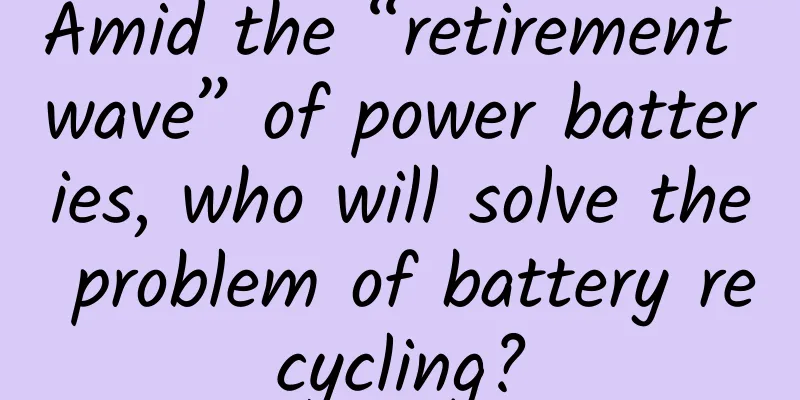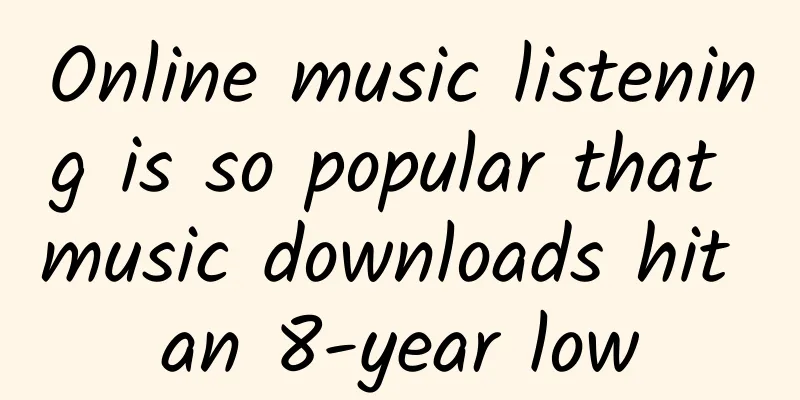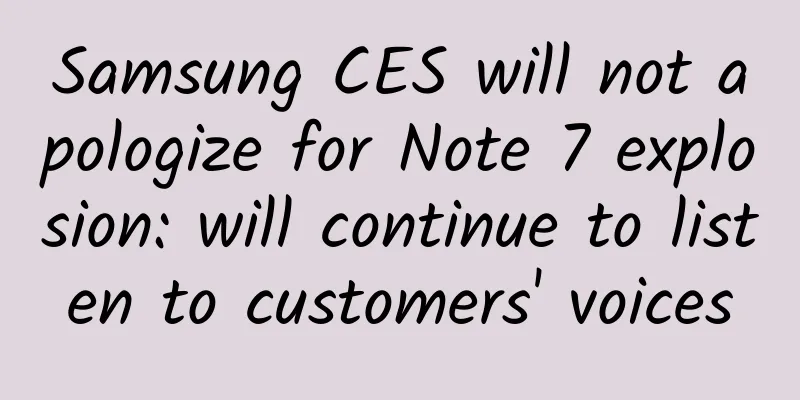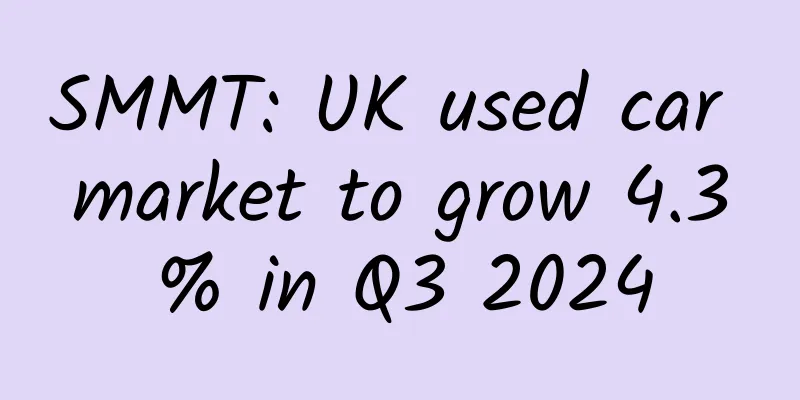Amid the “retirement wave” of power batteries, who will solve the problem of battery recycling?

|
The Interim Measures for the Management of Recycling and Utilization of Power Batteries for New Energy Vehicles will be implemented from August 1 this year. Currently, automobile manufacturers and power battery manufacturers are stepping up their efforts to develop recycling and utilization industries. The agency predicts that the market for recycling used power batteries will begin to explode in 2018, with a scale of 5 billion yuan that year. The Interim Measures for the Management of Recycling and Utilization of Power Batteries for New Energy Vehicles will be implemented from August 1 this year. Currently, automobile manufacturers and power battery manufacturers are stepping up their efforts to develop recycling and utilization industries. The agency predicts that the market for recycling used power batteries will begin to explode in 2018, with a scale of 5 billion yuan that year. When the opportunity comes, is the industry really ready? The highest bidder wins and it is difficult to enter the formal recycling channel "For the capital market, if the theme word for the new energy vehicle sector in 2017 was 'lithium extraction from salt lakes', the theme word for 2018 will be 'power battery recycling'," an industry insider told a reporter from China Securities Journal. In 2018, my country is experiencing its first peak period of power battery scrapping. According to data from the China Battery Alliance, the theoretical retired power batteries are expected to be 5.14GWh in 2018, and will reach 48.09Gwh by 2023. If these waste power batteries are not properly disposed of, they will not only pose huge environmental and safety risks, but also waste precious resources. The duck knows when the river water warms in spring, and industrial capital has smelled the business opportunity. Domestic institutions predict that the recycling market created by waste power batteries will reach 5 billion yuan in 2018. It will reach 6.5 billion yuan to 15 billion yuan from 2020 to 2023. According to the data of the Battery Alliance, the number of power battery recycling companies increased rapidly in 2018. As of March 2018, there were more than 400 companies. The number of new power battery companies in the first quarter of 2018 alone was the same as the number in the whole year of 2016. As the rigid market demand gradually increases, the national policy also launches a "combination punch" to strengthen the comprehensive management of waste power batteries. At the beginning of this year, seven ministries and commissions jointly issued the "Interim Measures for the Management of Recycling and Utilization of Power Batteries for New Energy Vehicles", emphasizing the implementation of the extended producer responsibility system and requiring automobile manufacturers to assume the main responsibility for power battery recycling. The measures will be implemented from August 1 this year. The industry predicts that with the continuous breakthroughs in related technologies, the speed of policy release will accelerate, and relevant detailed standards will also be released one after another. However, in reality, the construction of power battery recycling channels is not optimistic. Zhang Ying, secretary general of the scrapped vehicle branch of the China Renewable Resources Recycling Association, told China Securities Journal that the recycling of new energy vehicle batteries has just started, and many scrapped batteries have not entered the formal channels, and the market lacks regulations. As the industry is in a period of wild growth, a large number of car companies have adopted the highest bidder, resulting in most of the waste power batteries failing to flow into legal processing channels, and the actual processing methods are worrying. "In the past two years, we have signed agreements with many car manufacturers, but found that after the agreements were signed, the batteries were no longer in their hands. The distance between scrapped cars and car manufacturers is very far. How to return them to the car manufacturers smoothly after dismantling them is an issue that needs to be discussed urgently." Gao Weiqiao, deputy general manager of Huayou Recycling, pointed out that how to establish a recycling network is the core issue of the recycling business. Only when the scale effect is achieved can the company's cash flow, raw material supply system and product output system be stable. Irregular cascade utilization leads to confusion between good and bad Power battery recycling can be divided into cascade utilization and recycling according to the degree of scrapping. Cascade utilization is light scrapping, which can be used for secondary use in energy storage equipment and low-speed electric vehicles. Batteries that reach the secondary scrap level after cascade utilization will enter the recycling link. Recycling is heavy scrapping, and precious metal electrode materials such as lithium and cobalt are extracted through chemical methods to achieve the purpose of material remanufacturing. At present, many domestic automakers have deployed recycling. BYD, BAIC New Energy, Zhidou and other automakers have all deployed recycling. It is worth noting that unlike domestic brands that actively carry out recycling, joint venture brands tend to "skip" recycling and directly enter the recycling link. Brunp, as a holding subsidiary of CATL, has undertaken most of the power battery recycling work installed by CATL in a German new energy vehicle. Yu Haijun, general manager of Hunan Brunp Automotive Recycling Company, said in an interview with a reporter from China Securities Journal that domestic brands are very positive about cascade utilization, but most joint venture brand car companies do not actually agree to authorize cascade utilization. Because the cascade utilization of batteries is essentially still the processing of battery products, it should be in accordance with the requirements and standards of the battery processing and manufacturing industry to ensure the quality of raw materials, process quality control, product certification and after-sales quality assurance. However, the so-called cascade utilization market currently does not have testing standards for raw materials, life prediction technology, product certification, and does not undertake recycling quality assurance. In addition, the difficulty of cascade utilization is that the types, performance, specifications, and resistance-bearing methods of each manufacturer's batteries are completely different. After re-matching, the battery consistency problem cannot be solved. Gao Weiqiao told China Securities Journal reporters that due to the small scale and imperfect recycling channels, the pricing of raw material recycling is unstable. After investing, some companies found that there were irregularities in the cooperative enterprises. "Qualified people are doing it, and unqualified people are also doing it." Several companies with recycling businesses told China Securities Journal that if technology and safety are taken into account and the normal battery production process is followed, the recycling business is currently in a loss-making stage. An industry insider who did not want to be named told China Securities Journal that the average life of recycled batteries in the energy storage field is 9 years, and they can achieve profitability in the 6th year. However, if they use violent and simple assembly, many non-standard recycling companies will be able to make a lot of money in the short term. For example, many retired batteries in China have made a lot of profit through irregular channels in low-speed electric vehicles, power banks and other application scenarios. "Low-speed electric vehicles consume more than half of the waste batteries, which has given rise to the existence of gray areas in provinces with large low-speed electric vehicles such as Shandong and Anhui." The above-mentioned industry insider who did not want to be named said, "Some power banks come from second-hand waste batteries, and even some rusty batteries can still be sold well after simple treatment and beautiful packaging. This is the current situation of many irregular cascade utilizations." "At present, cascade utilization is basically asset-light, while recycling is all asset-heavy. Many new companies have not considered clearly whether to do cascade utilization or recycling, and have not fully understood the specific technical routes and business models." Yu Haijun believes that "cascade utilization is not a simple secondary resale. If the life cycle, emissions, and energy consumption costs are taken into account, as long as the technology advances, the unit price of new products will continue to decline. With the trend of rising resource prices and falling unit prices of new products, the total cost advantage and economies of scale of recycling will become more obvious." "What we are discussing now are things that will happen 5-8 years from now. As battery costs drop rapidly, automakers will be more willing to buy new batteries, and by then, cascade utilization may no longer exist," said Gao Weiqiao. Costs remain high, recycling system needs to be improved Li Yuke, deputy director of the Automotive Industry Policy Research Office of the China Automotive Technology Research Center, told a reporter from China Securities Journal that the main factors restricting the development of power battery recycling are that the market stock is not large enough, the recycling flow is too scattered, and there is no scale processing, resulting in high comprehensive costs. From the current situation, the cost of recycling and processing batteries mainly includes professional evaluation, professional packaging, professional warehousing and transportation, environmental protection management, technology and equipment development, labor taxes, depreciation allocation, etc. In addition, the storage and circulation links are not smooth enough, and the recycling system still needs to be improved. At present, the embryonic form of the power battery recycling pattern has begun to emerge. It can be roughly divided into the lithium battery material system represented by Jinchuan, Shanshan Co., Ltd. (22.100, 0.91, 4.29%), Huayou Cobalt (97.470, 4.93, 5.33%), and Ganfeng Lithium (38.580, 0.80, 2.12%), the vehicle system represented by BYD, BAIC New Energy, and Zhidou, and the third-party recycling system represented by Brunp and GEM (6.050, 0.19, 3.24%). "Companies that master battery PACK packages can obtain historical data on batteries and make accurate predictions on battery life, thus controlling costs, because they are in the core testing link." Yang Qingyu, director of the research department of the China Battery Alliance, analyzed to a reporter from China Securities Journal that automakers are willing to go one step further upstream in the industrial chain - to set up PACK factories. PACK factories can recycle batteries through new energy vehicle sales channels, and test and screen the batteries. Batteries that can be reused are regrouped, and batteries that cannot be reused are entrusted to recycling companies for processing. Therefore, most vehicle manufacturers prefer to choose cascade utilization, but the disadvantage of this model is that the channel source is relatively single. In order to meet the policy requirements for high energy density of batteries, the technology route of power batteries is rapidly changing from lithium iron phosphate to ternary materials. Xiao Chengwei, an expert of the overall expert group of the National 863 Plan Energy Saving and New Energy Vehicle Major Project, predicts that the production volume of ternary material batteries will exceed that of lithium iron phosphate batteries for the first time in 2018. Compared with lithium iron phosphate, the content of the main metals nickel, cobalt and manganese in ternary materials accounts for 12%, 3% and 5% respectively, and the total metal content is as high as 47%, which has a high recycling value. Therefore, the commercial profit model of recycling and utilizing waste ternary batteries is basically mature. The above-mentioned industry insider who declined to be named said that according to current price calculations, the recycling cost of ternary batteries in power batteries can basically achieve profitability at 28,000 yuan/ton; while the recycling cost of lithium iron phosphate is 5,000 yuan/ton, and most companies are currently making losses. Unlike the mature commercial profit model of ternary battery recycling, the economic efficiency of lithium iron phosphate battery recycling is the biggest problem that troubles companies. In this regard, Xie Shaozhong, general manager of Ganfeng Recycling Technology Co., Ltd., told a reporter from China Securities Journal: "The current situation of the entire industry is 'not enough to eat'. Currently, 60 to 70 percent of the lithium iron phosphate batteries in the industry are in Ganfeng Lithium, but we are still only half full. Because the lithium iron phosphate batteries that are about to be scrapped are the most, scale has become an important factor in whether the economic efficiency can be improved. If everyone does it, there will be no quantity, which is a problem at this stage." "From the perspective of domestic battery development, lithium iron phosphate batteries were used earlier, the technology is relatively more mature, and they are widely used in commercial vehicles. However, the battery wears out relatively faster, so the time of scrapping is earlier than that of ternary batteries. Currently, the recycling of lithium iron phosphate and lithium manganese oxide urgently needs subsidies and other policies to promote the development of the industry." said Li Yuke. As a winner of Toutiao's Qingyun Plan and Baijiahao's Bai+ Plan, the 2019 Baidu Digital Author of the Year, the Baijiahao's Most Popular Author in the Technology Field, the 2019 Sogou Technology and Culture Author, and the 2021 Baijiahao Quarterly Influential Creator, he has won many awards, including the 2013 Sohu Best Industry Media Person, the 2015 China New Media Entrepreneurship Competition Beijing Third Place, the 2015 Guangmang Experience Award, the 2015 China New Media Entrepreneurship Competition Finals Third Place, and the 2018 Baidu Dynamic Annual Powerful Celebrity. |
>>: CHJ Automotive first talks about L4 autonomous driving to achieve commercial operation in 2025
Recommend
The management routines of big sales players that you don’t know
The management routines of big sales players that...
WeChat Development Access Guide
Overview To access the WeChat public platform for...
Domestic TV manufacturers are fighting among themselves one after another. Be careful not to become victims of the competition among giants.
Looking at the development of China's televis...
Functions and characteristics of the construction site real-name gate system
The construction industry is an important materia...
After 20 years of gene sequencing, we finally figured out what junk DNA is for
In 1990, the international human genome project w...
How would you set up an account for multi-region advertising?
Account structure is both our tool to control tra...
No longer restricted: Users can now rate iOS apps through the App Store
According to foreign media 9to5mac, for a long ti...
The benefits of Douyin Blue V certification. It turns out that it is so profitable after Douyin Blue V certification is activated!
From 2G to 3G, from 3G to 4G, and now 5G has arri...
How to operate new media well? New media operation positioning skills!
Before operating new media , we must first have a...
How to clean up the "Other" of iPhone? Four methods to teach you how to effectively clean up iPhone storage space
[[420320]] iPhone users with only 64G or 128G may...
Can I get a refund if I regret buying gifts on Douyin? Any live streaming tips?
The number of people playing Douyin is increasing...
Brilliance Automotive Group has finally learned something from BMW. Can the Brilliance Automotive Group V7 create a miracle?
When talking about Zhonghua, what do you think of...
The best nap time is here! Research finds that people who take naps regularly should never take naps longer than this time!
"If I don't take a nap in the afternoon,...
Lei Jun invested 10 billion to establish Xiaomi Motors in Beijing, and selected a team of 300 people from 20,000 resumes
On September 1, Xiaomi Group announced that Xiaom...
How did the 3D printed cake come about and what does it taste like?
Cake is an ancient Western pastry, usually made i...









